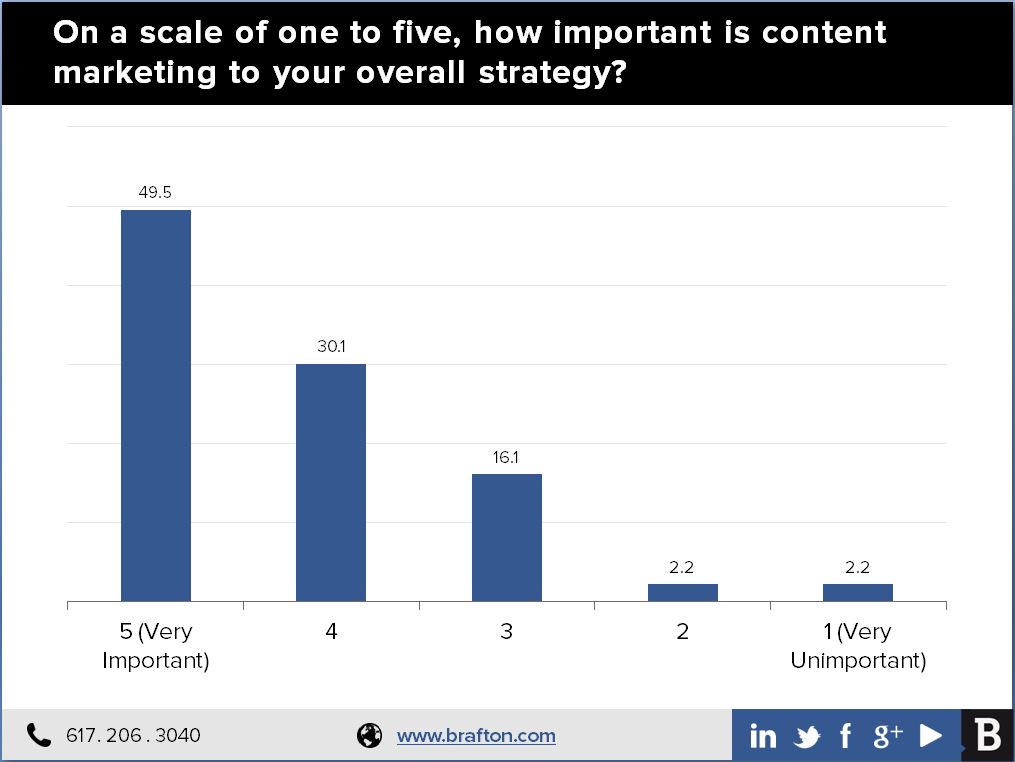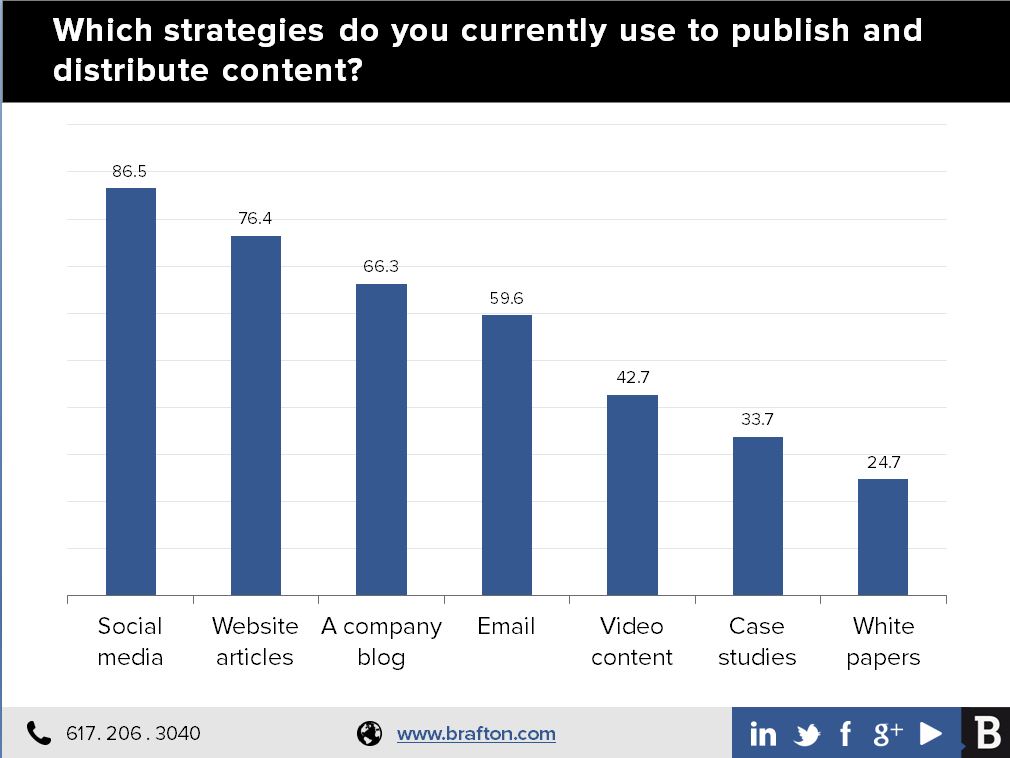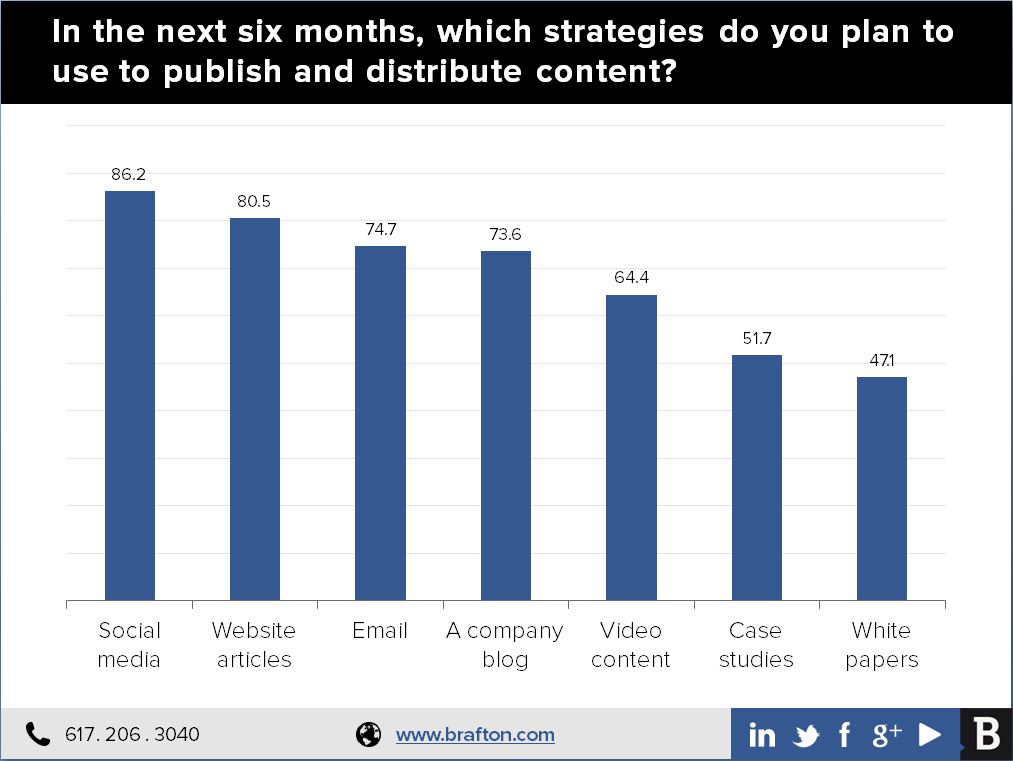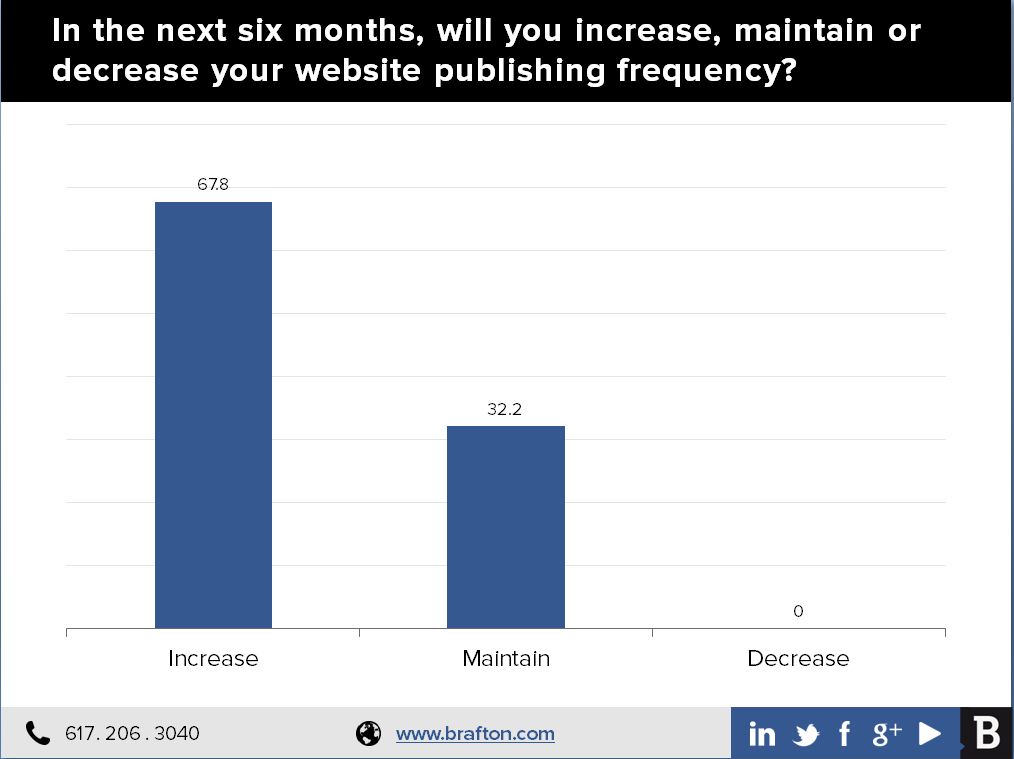Brafton polled 103 marketers in various industries to assess their current and future efforts in creating content to improve their web presences. The dynamic nature of web marketing has resulted in organizations diversifying their custom content campaigns to include several different kinds. Adoption of every content type included in the poll will grow in the coming months, except for social media which will maintain its current use by 86 percent of respondents.
Among the goals respondents found the most success in was lead generation, as 76.4 percent said that content marketing has positively impacted their ability to drive leads for their company.
While Brafton maintains that news content marketing campaigns are for improving website traffic and relevant leads, we also believe comprehensive strategies that offer a strong mix of articles and lengthier pieces are most likely to result in quality leads – and data suggests we’re not alone. For example, Brafton has reported in the past that white paper marketing became more common in 2011, with 38 percent of companies using custom content developing the lengthier pieces compared to 30 percent in 2010. Our poll found that 24.7 percent of respondents used white papers in 2011, but 47 percent will implement them into their content strategies this year.
The goals of website content are as numerous as the kinds of content companies use in their strategies. Many poll respondents identified website content as “highly effective” in driving SEO (58.8 percent), building brand awareness (46.5 percent), driving website traffic (48.8 percent), generating inbound leads (41.2 percent) and driving online conversions (34.1 percent).
But virtually all marketers included in the poll said content is important to their overall marketing strategies, with nearly 50 percent ranking it as a five (on a scale of one to five) in terms of importance, and another 30 percent ranking it as a four.
Here are more insights from Brafton’s content marketing poll.
Varied mix of content helping businesses attract prospects
Brafton asked marketers about their use and plans for website articles, company blogs, social media, white papers, case studies, email newsletters and video content. Each content type and channel included in the poll is maintaining or gaining adoption.
More than 86 percent of marketers who said content helps generate leads use case studies as part of their marketing strategy. A similar percentage said that email marketing campaigns result in new business opportunities. Blog content and news articles were named by 85.7 percent and 84.7 percent of respondents, respectively.
These respondents have launched content marketing campaigns and altered them frequently to target their audiences most effectively. Among the chief aims of most efforts is to improve website’s SEO. The benefit of a strong search presence is increased visibility to the more than 89 percent of Americans that turn to search engines to conduct research for purchase decisions. This could explain the greater focus on pieces, such as case studies and white papers, that help marketers generate leads. According to the survey, none of the respondents that employ some form of website content said that content marketing fails to drive leads. While not every lead results in a conversion, more than 48 percent of respondents said that the leads generated by website content are of a “good quality.” Furthermore, 10.5 percent said that they are “high-quality” leads that are likely to result in conversions.
Publishing frequency, quality attracting buyers, leads
Marketers are working to vary their website content aggressively and ensure that they publish different types of website content (landing pages, articles, blog posts, product pages, case studies and white papers). Maintaining quality and improving frequency often causes problems for businesses. However, those that find the balance between creating varied, engaging content and generating enough of it are seeing the most success. When asked about their plans for updating website content, more than two-thirds said they will increase the frequency of their updates, 32.2 percent will maintain current updates and zero respondents will decrease their content updates.
This practice keeps search crawlers coming back to a website often, but, more importantly, it helps demonstrate a company’s authority to prospects. Producing content that helps inform prospects and shapes their view of an industry will make them more likely to consider working with a company.
Brafton found that more than 75 percent of marketers who believe their content yields high-quality leads update their count multiple times per week, while 55.6 percent do so more than once every day.
Often, marketers want to produce content but they don’t have the internal resources to research, write and prepare the content to ensure that their websites benefit from content. The poll found that more than 62 percent of respondents who said content results in high-quality leads are using third-party agencies to write their articles, case studies and blogs. The same amount employ dedicated content writers to ensure that their articles are of the highest quality. Less than half of the marketers successfully generating leads with website content employee freelancers to carry out their campaigns.
Additionally, 80 percent of respondents that said content marketing produces low-quality leads also said that they use freelancers to create their content.
If you write it, they will come
With so many marketers seeing results with content marketing, 54.3 percent of respondents said they will spend more on articles, white papers and other forms of site content in the next six months. Meanwhile, 42.4 percent will maintain their budgets in that time with 3.3 percent saying they will decrease their investments. The future of content marketing appears to be strong as well, as investment and belief in its value is trending up. With more than half saying they will increase investment, an additional 77.3 percent of respondents reported that they think content marketing will become more important for lead generation in their company and others moving forward. Even with some organizations saying they will spend less on content marketing, none of those responding to the survey said they believe the method will become less important for lead generation.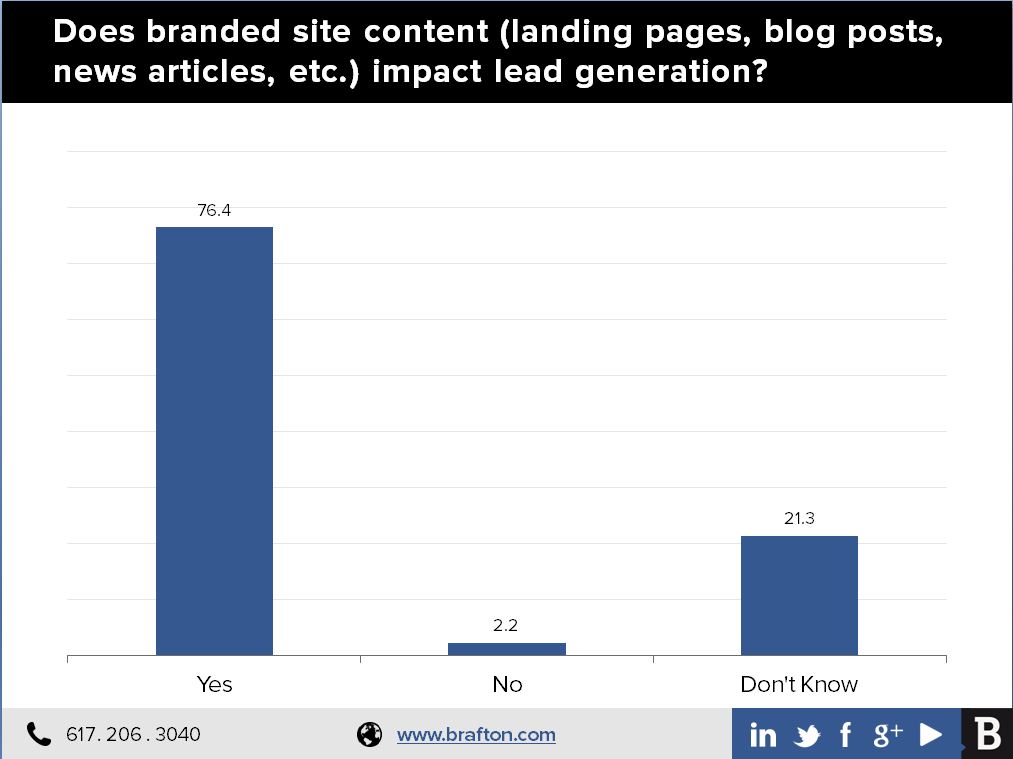
The evolution of content marketing is especially interesting. With so many companies using different kinds of content to drive site traffic and generate leads, the views of these marketers on the future of content vary. More than 80 percent of marketers not seeing the lead generation improvements they would like said they’ll integrate social content into their campaigns to boost leads moving forward. Meanwhile those without the resources to create more content will also use social media marketing to distribute their content more effectively. To maintain and build success from content marketing, businesses need to learn to properly measure the impact of their content. Brafton’s poll found that more than 21 percent of respondents don’t know if content drives leads because they aren’t sure how to measure results.
Measuring content results also tied as the leading challenge content marketers face, cited by 68.8 percent of respondents. Create content that engages and influences audience was the other most common content marketing challenge. An effective content marketing strategy that starts with a process for targeting relevant users and includes analytics and reporting can help businesses overcome these issues.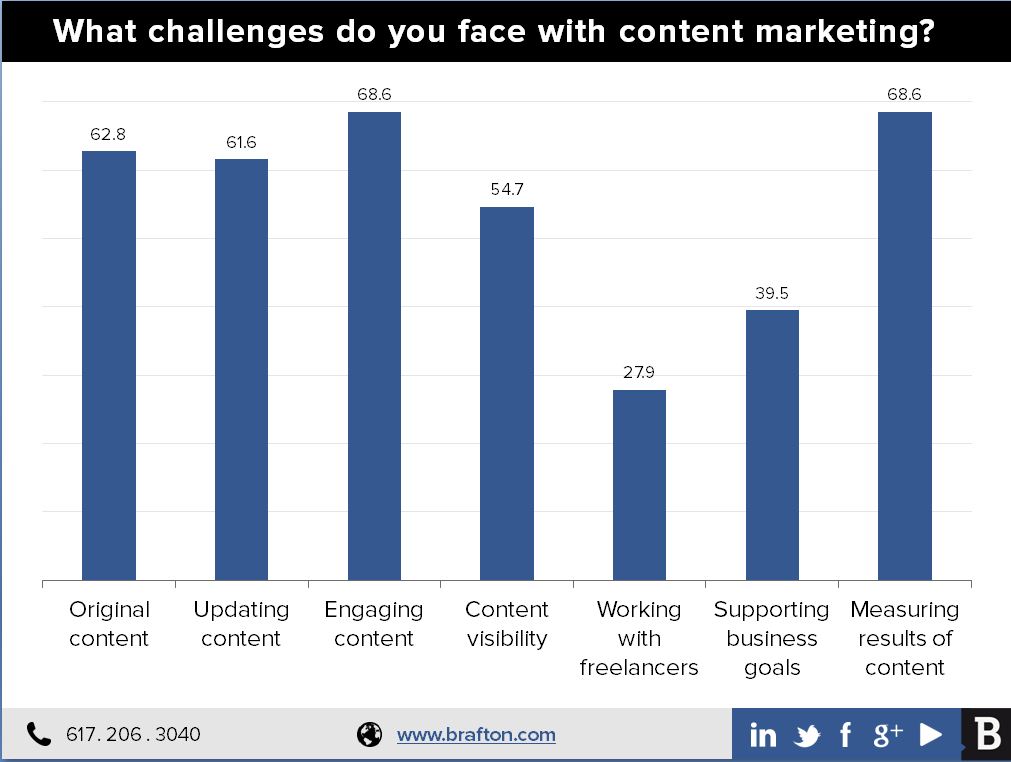
Content marketing is among the most broad and popular forms of new media marketing on the web with organizations across industries relying on it for different reasons. Moreover, identifying qualified prospects or customers is becoming more important throughout the week as people interact with web content from so many different devices. While Brafton’s poll found that content marketing efforts are evolving, other data indicates increased content investments cater to rising demand as Americans are reading (and viewing) more content on the web. For example, Pew recently found that 61 percent of people view news content on the web every day.

